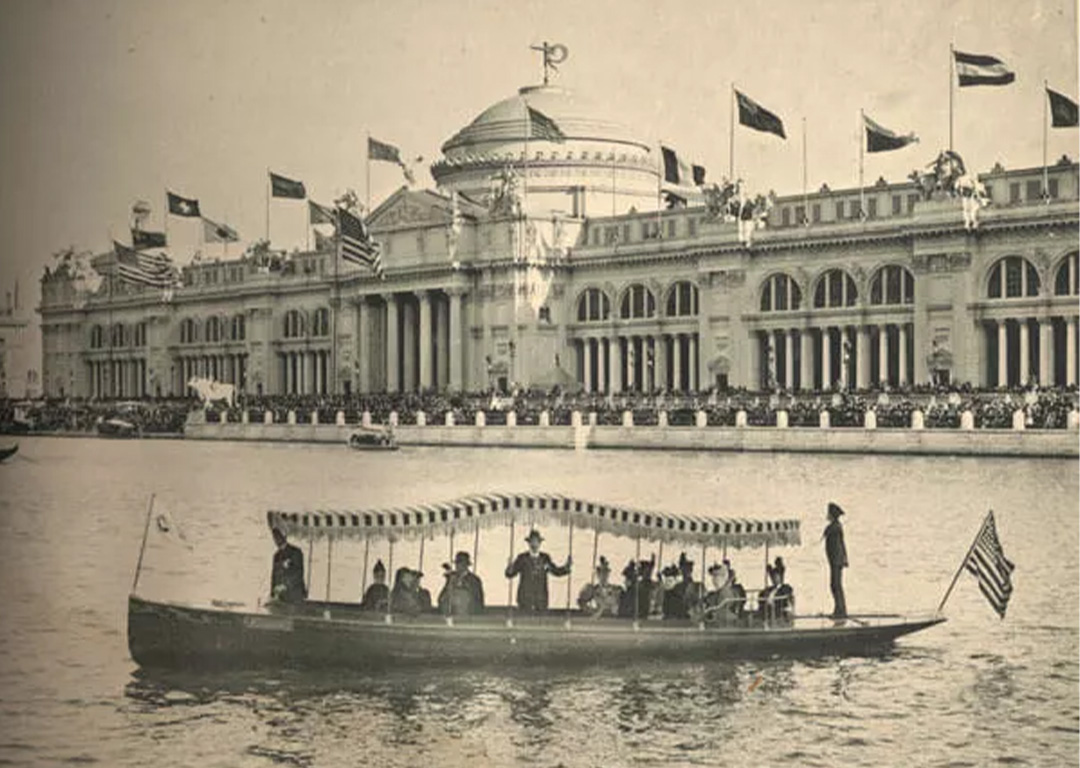Elco: A Legacy Powered by Innovation

55 Elco electric launches were built for the 1893 Chicago World’s Fair
A Historic Start
At the World’s Fair in Chicago in 1893, Electric Launch Company propelled dozens of 36-foot launches using electric inboard motors and batteries to ferry more than a million passengers without smoke, soot, ash or open flame. That was a big deal back then, before internal-combustion gas or diesel engines, when other choices were only external-combustion steam or naphtha engines. Elco, as the company soon became known, continued to grow, building thousands of vessels for titans of industry, royal families, adventurers and everyday yachtsmen.
Pioneering Innovation
As fossil fuel took hold at the turn of the century, Elco led the boating industry’s quest for fast, efficient propulsion. Elco’s in-house design team — the first in the recreational boating industry — introduced stepped hulls into recreational runabouts in 1911 with the 16-foot Elcoplane that reached 35 mph using a 40 hp Elco gasoline engine. In 1912 Elco launched the first American diesel yacht, the 84-foot Idealia.
Meanwhile, Elco’s fraternal twin, Electric Boat Company (now submarine builder General Dynamics) pushed the boundaries of battery-powered propulsion beneath the waves to develop the U.S. Navy’s submarine fleet, including the Navy’s first commissioned submarine in 1900, USS Holland, as well as the Navy’s first diesel-electric submarine in 1911, USS Skipjack.
Elco’s advancements in both boats and propulsion, as well as manufacturing techniques, kept them at the forefront of recreational and military design.

In 1911, Elco debuted the first stepped hull with the 16-foot Elcoplane, reaching 35 mph.

In 1912, Elco launched the first American diesel yacht, the 84-foot Idelia
Supporting the Armed Forces
The company’s advanced production line techniques were highlighted when Elco employees built 550 Elco Motor Torpedo Boats in just 488 working days during the First World War, and another 399 Patrol Torpedo Boats—one every 60 hours—during the Second World War. Those Elco PT boats included then-lieutenant John F. Kennedy’s famed PT-109 and his second command, PT-59.

Elco PT-109 Crew with Lieutenant John F. Kennedy
Embracing Electric Power
Elco continued to innovate both military and recreational craft. Elco PT Boats tested stepped hulls near the end of World War II. They were incorporated into Elco’s offshore pleasure cruisers after the war and are now a design staple for many boatbuilders. But as the World War became the Cold War, corporate focus shifted to Navy submarines and a newly acquired aircraft division.
Fortunately for pleasure boaters, our history of utilizing the best available technology continued again in 1987 when solid-state motor controllers helped Elco reintroduce battery powered electric propulsion to recreational boats. The company’s classic launch designs, still available today, are modern throwbacks to early Elcos gliding cleanly and quietly through the water. Harnessing technology to benefit boaters has always been hardwired into everything we do.
Beginning in 2009, under new ownership, Elco refocused on electric propulsion while understanding the practical benefits combustion engines don’t offer. There are no concerns or odors from spilled or leaked fuel, and no exhaust fumes to smell. Electric motors are nearly vibration free, typically less than half as loud as combustion engines, and require no scheduled service for thousands of operating hours. Elco continues to leverage these advantages to engineer better boating, not just greener boating.

Today’s Innovations
Elco’s outboard motors place less weight on the transom than similar gas outboards. In fact, Elco’s EP-20, intended to replace 20 horsepower combustion engines, weighs about the same as most 9.9- model gas outboards. Battery packs, sized for adequate runtime, place weight where it’s most beneficial. Electric outboard-powered planing powerboats — another Elco first for recreational boaters — now routinely zip along lakes and bays.
The company’s newest EP-20 electric inboard measures only one half the overall length, one half the overall height, and about one third narrower than the Universal Atomic 4 gas engine many older sailboats were delivered with. Today an Elco inboard, along with enough battery capacity to meet the needs of most boaters, weigh one third less than the Atomic 4 or common diesel alternatives. Elco’s inboard motor patented airflow cooling system eliminates seawater plumbing and exhaust systems — two significant safety concerns in traditionally powered vessels. Our motors also don’t need marine transmissions and don’t require scheduled service for thousands of operating hours.

Elco Moving Boating into the Future
Elco is leveraging their decades of electric propulsion experience to standardize interconnectivity within electric propulsion systems and link them to other marine technology, too, making boating better in ways combustion engines can’t.
Elco’s innovative DASH App with Bluetooth communication seamlessly connects to any iOS or Android mobile device or smartwatch to monitor system performance and display data such as speed, RPM and battery charge parameters. That same functionality is now accessible on most marine navigation displays, but that is just one benefit to standardizing interconnectivity.
Incorporating NEMA 2000 allows Elco’s systems to communicate in a universal language between battery systems, motor controllers, boatbuilder equipment and interfaces customers choose. This interconnectivity also allows Elco motors to run on many battery systems, versus competitors’ proprietary choices. Besides benefiting consumers directly, integration with OEM systems simplifies incorporating Elco electric or hybrid propulsion into production boat models as well.
As Elco celebrates 130 years, we continue to lead in electric propulsion, enhancing connectivity and integrating advanced technologies. With a commitment to innovation, Elco is shaping the future of boating.


